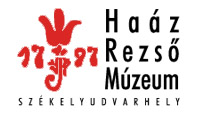Kovács Petronella (szerk.): Isis - Erdélyi magyar restaurátor füzetek 19. (Székelyudvarhely, 2019)
Pápay Kornélia: Beszámoló a műtárgyak esztétikai szempontból zavaró szőrmehiányainak pótlására tett kísérlet tapasztalatairól
The main three conditions of a copy are the Causality, the Similarity and the Difference and not only the visible similarities are important, but the context, where the original artwork was born. The case of the mosaic replicas is a kind of substitution the replica represents at the original spot. The main criteria of the authenticity are the formal constraints, but the degree of them can change from work to work. On the turn of the 19-20th centuries the indirect techniques are in blossom. The mosaics were created in studio, and in lots of cases the designer of the composition and the mosaicist, the person of the execution, is different. This division foresees that the mosaic is a transpose, and its quality, similarity and gestures depend on the sensitivity and interpreting skills of the mosaicist. We know artists who were not the fan of the contemporary mosaic art because it meant losing the personality. The lunetta mosaics of the Mausoleum of Ferenc Deák in the National Cemetery in Budapest were made by Miksa Róth’s workshop just a few years later when the originally executed frescos of Bertalan Székely became irreversibly damaged. Those damages derive directly from the technology and the environment. The Róth-workshop could work by using Székely’s original cartons and following them strictly - quasi line-by-line - during the execution of the mosaic version. Székely could keep in track the working process. They made a reconstruction by mosaic technique in the case of the replacement of a lead high relief in Pannonhalma, which decorated the facade of the tower of the Benedictine Monastery. The original artwork of Nicolas Schroth was partially demolished, it became dangerous for life after a heavy storm, and they decided to change it for a glass mosaic with the same subject and similar composition. Interesting is the case of the altarpieces and vault decorations of the Saint Peter’s Basilica in Rome, where until now more than 10000 sqm mosaic were created to exchange the painted artworks with a much more permanent medium. The Vatican Mosaic Studio was founded in the 16th century and the institution linked with the name of Pope Gregory XIII. The work was started by Venetian craftsmen who could involve the Roman artists in the technique. In the beginning of the 17th century, Alessio Mattioli has developed his opaque glass pastes in a wide range of colours. The goal of their work was a kind of „trompe l’oeil”, to create the painting from tiny mosaic tesserae and to reach an appearance as close as possible to the original brushwork. The studio has preserved its dual purpose still today caring for the mosaics and creating new works as well. Dr. Brigitta Mária Kürtösi Painting conservator artist DLA Translated by: the author Éva Puskás - László Sulyok Presentation of the Ascension Cathedral in Satu Mare and the Church Art Collection The cathedral got its present form in the thirties of the 19th century as a result of several transformations. Its base is a little parish church with one tower, which was built between 1786-1798 after the Church of Our Lady in the castle get ruined. The rebuilding was done in three stages, it was started in the episcopate of baron István Fischer (1804-1807), went on in the era of bishop Péter Klobusitzki (1808-1821), and it was finished under the period of the episcopate of János Hám (1830-1837). The design of the interior has also changed steadily over the past centuries. According to the demands of the period, the furnishing of the church was expanded, sometimes renewed or replaced. The paintings of the side altars have been restored between 2015-2017 by the authors in the atelier of the Roman Catholic Diocese of Satu Mare. Beside the documentation of the conservation works, the restorers wanted to get more information on the creation of the paintings, the painters of the pictures, and the building itself. The current study, expanded with new data from Diocesan Archives, is presenting the history of the cathedral church, its altars, paintings, furnishing and the related conservation works, and includes the Gyula Meszlényi Church Art Collection housed in the cathedral. Eva Puskás Painting conservator László Sulyok Collection manager Translated by: Eszter Tóth Viktória Beatrix Mátyás Aesthetic completion of contemporary paintings, theoretical and practical problems The aesthetic completion of contemporary paintings is often challenging, because the traditional retouching methods are not suitable for these artworks. For example, the use of distinguishable retouching (like trattegio, pointillism, tonal adjustment) in these paintings would mean that the restoration ignores the artist’s intention. Since the American Expressionism, the quality of the paintings’ surface is a tool in the artist’s hand, the unity or the alteration of the colour, the shine or matte effects are essential for the painters’ intention. In most cases, there is no varnish on these paintings, and they cannot be varnished, so the materials must be chosen carefully. Problems may also occur due to improper use of the materials or the composition of the paint. The artists no longer mix the paint from oil and pigment, but the behaviour of the tubular, readyto-use paints are unpredictable in the long run. 201
